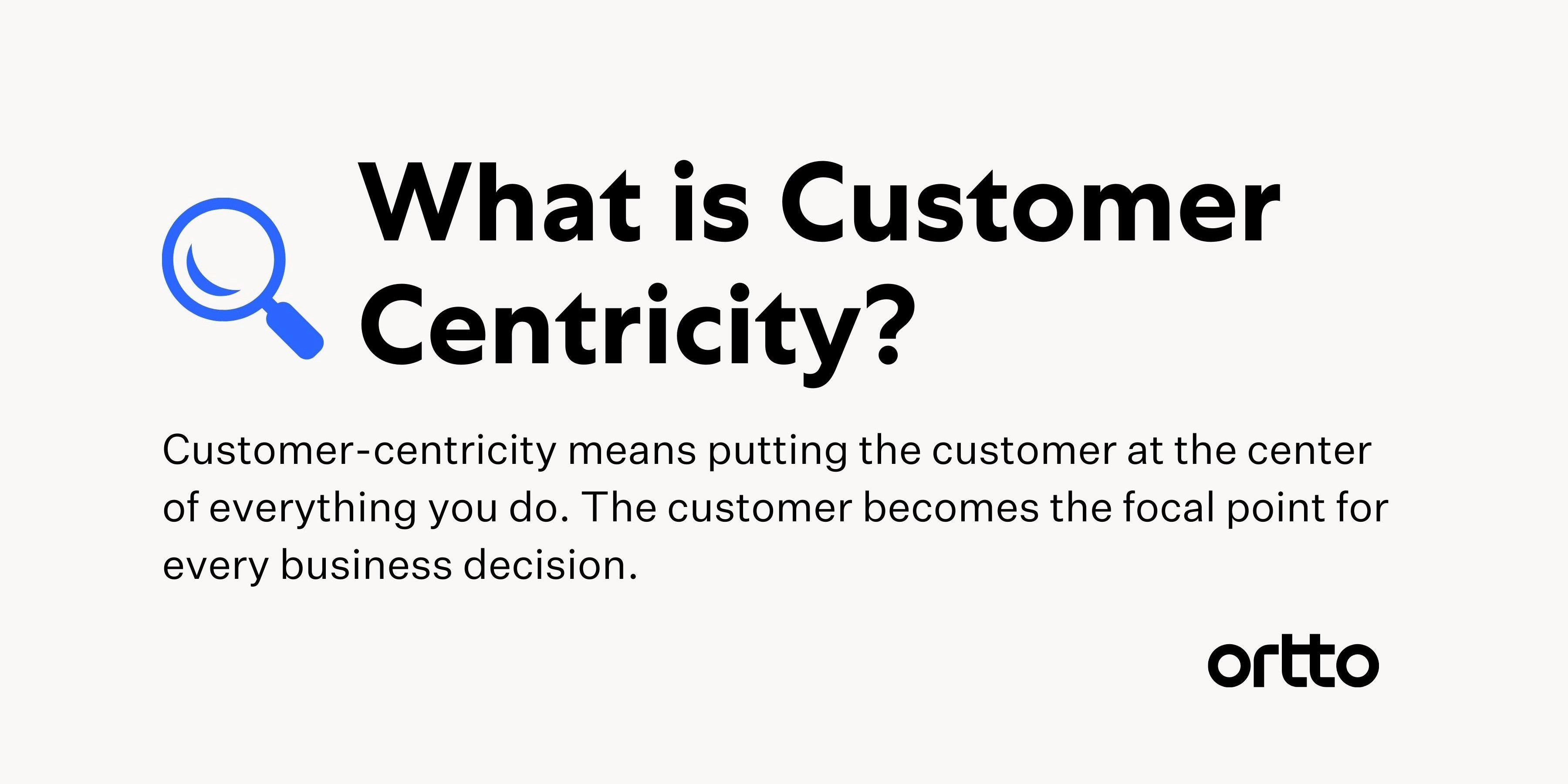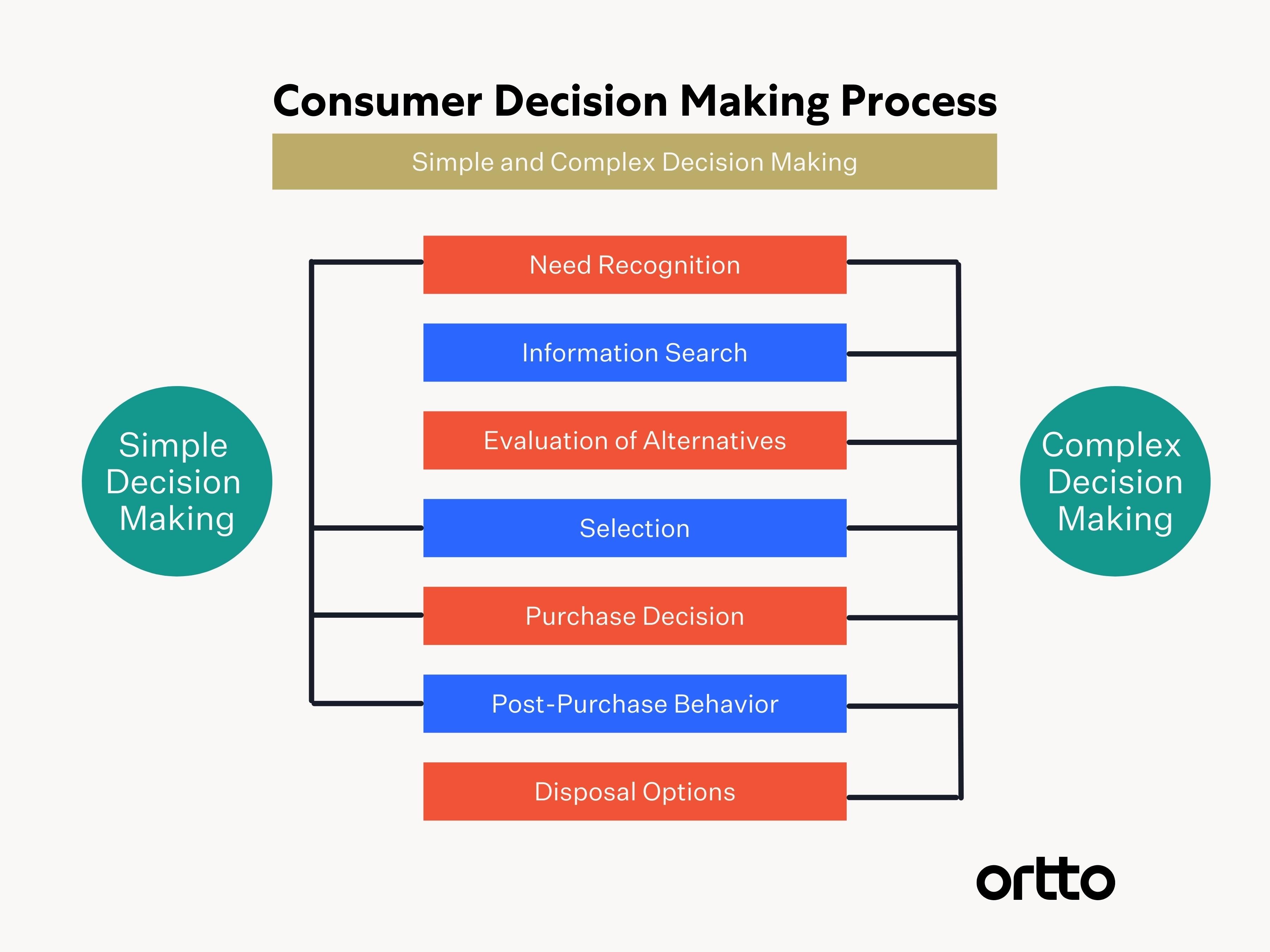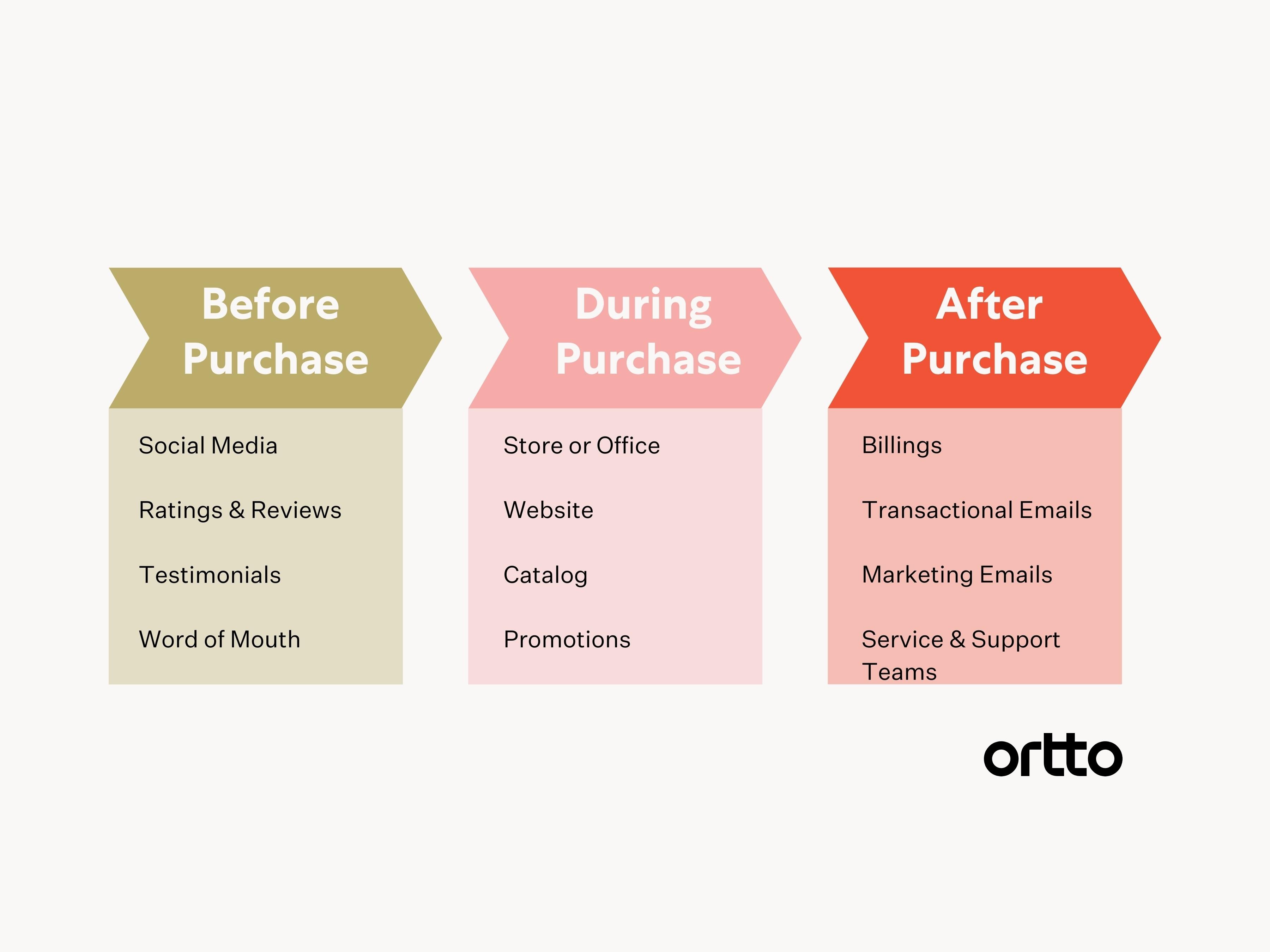A customer-centric business model has become a cornerstone of a sustainable growth model — the kind that holds retention, expansion, and advocacy in as high regard as it does new business.
With more competition than ever before, skyrocketing costs per acquisition, and an increased need for long-term, sustainable growth, businesses that have adopted a customer-centric model are more likely to grow.
What is customer-centricity?
Customer-centricity means putting the customer at the center of everything you do. The customer becomes the focal point for every business decision — from product development to delivery, marketing messages to content strategy, sales approach to growth strategies.
One of the keys to becoming a customer-centric business is to consider how you can deliver a more positive experience to your customers at every single stage of their journey. Not just when they sign up or make a purchase, but also when they’re asking for a refund, leaving a review, or making a recommendation.

Why is a customer-centric business model beneficial?
This kind of laser focus on your customers is beneficial for a number of reasons, including:
Understanding your customer’s journey
By going beyond leads and conversions to understand what motivates customers at every stage of their journey, you’ll be better placed to retain, and even create ambassadors out of, your customers. Retention and ambassadorship make growth more sustainable — it ensures that every new lead really is a new lead, not just a replacement for a lapsed customer.
Increasing your customer’s lifetime value
Supporting your customers beyond the initial sale ensures they get the most out of your products or services. And when they can see the value in what you offer first-hand, they’re more likely to try other products or product features, driving up their lifetime value.
Discovering growth opportunities
Whether you’re a SaaS business operating in a product-led growth model or a service-led business expanding your offering, a customer-centric strategy helps ensure you’re getting a constant flow of feedback from your buyers. More often than not, there’s a wealth of growth opportunities hiding in this feedback — like new product, service or feature ideas, opportunities to bundle products to increase basket size, and even compelling marketing messages.
Fixing operational issues
Whether it’s a hard-to-read user guide, unnecessarily complicated contracts or sign-up procedures, or onboarding issues, it can be easy to miss what’s not working. With a customer-centric business model, you’ll ensure that the processes and systems are in place to catch this feedback — and that your team is empowered to act on it quickly.
Beating the competition
There are a lot of brands out there, many offering almost exactly the same thing. Your customer's experience with your business is the one thing that will determine whether they stick with you, or head to a competitor. A customer-centric strategy motivates every team and individual in your business to prioritize customer satisfaction and safeguard your brand against competitors.
Tips for becoming a more customer-centric business
Creating a customer-centric business doesn't just happen, it's intentional. Here are some of the practices that top-performing brands have adopted to make their business more customer-centric.
Understand that the customer’s decision-making process is not linear
We now know that today’s buyer does not take a clear and direct path to conversion; they go down a long and windy road crossing various devices, channels, platforms, and messages. Their decision-making process is just as complicated. A customer-centric strategy acknowledges this, allowing you to better personalize the journey from awareness to conversion.

Analyze every aspect of the customer journey
When you collect and analyze data that matters, you get to know your customers well. And scrutinizing every stage of the customer journey will allow your business to see its products or services through its customers’ eyes.
A customer journey is the sum of all the experiences that your customer has while interacting with your company or brand — and that journey can be mapped out and then analyzed in its full context, providing valuable insights that you can then use to design products or services to help these customers achieve their objectives as effectively and as quickly as possible.

Reward loyal behavior
A business that consistently recognizes its loyal customers is customer-centric. An effective way to build customer loyalty is to reward customers for engaging in behaviors that help grow your business.
For example, behaviors like making repeated purchases, publishing positive product reviews, and telling their friends or family about your brand can and should be rewarded through referral programs, points programs, or surprise and delight experiences.
Listen to your customers
Whether your customers are filling out a form on your website, having a one-on-one conversation with you via chat, or leaving feedback on review sites, listen to what they are saying and identify the steps you can take to improve their experience with your brand.
When you listen to your customers, you not only find out more about who they really are and what they think of you, but you’re also more likely to pinpoint what’s preventing potential customers from converting. Common barriers to purchase include having a product that’s too expensive, a convoluted or confusing purchasing process, or an over-complicated product.
Create remarkable customer experiences
As much as we’d like to, we cannot predict your customers’ every move when interacting with your brand. You can, however, reduce the likelihood of them straying away by making the customer experience as pleasant as possible for them. They involve:
Being user-friendly: Customers value simple selection options, uncomplicated interactions, and easy-to-understand information. These factors not only support smooth transactions but also expedite the buying process.
Ensuring your content is relevant: Customers expect you to read their minds, and the demand for personalized content and recommendations is increasing.
Speed: When a customer visits your website, load speed is the first impression they’ll have of your brand. The quicker your website loads, the more engaged your visitors will be — and engaged visitors are magic: they click more, buy more, and convert more often.
Ultimately, the key is to put yourself in your customers’ shoes and think through every little detail to create a customer experience that will make them thoroughly impressed.
Create a customer-centric culture
Hiring customer-centric employees and fostering a culture of ‘customer first’ will go a long way to help you become a truly customer-centric business. Your employees are the face of your business and handle the day-to-day operations — it’s likely that they also have more encounters with customers and can identify feedback that’s worth acting on.
Start by democratizing customer data and insights, giving employees on every team and level the opportunity to read customer support tickets and identify some of the issues that are being faced. While your customer service team can deliver an incredible experience for an individual customer, they may not spot an opportunity for a product improvement or a marketing message tweak.
It can also be helpful to reward employees for customer outcomes. For example, if a customer loves your brand so much that they’ve left a positive review, made a referral, or volunteered to be part of a case study, the team behind that result should be rewarded.
Final word
Transforming your business into one that is genuinely customer-centric is a complex process that won’t happen overnight, but doing so will yield significant benefits for your business — trust us, it’ll be worth it.
Originally written by Libby Margo and published 25th July, 2019. Updated for relevancy 2024.
Author

More by Meagan Philpot
Meagan Philpot has no more articles


